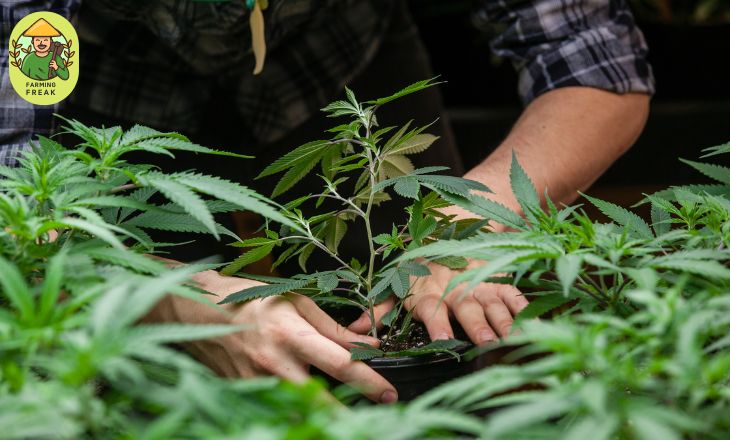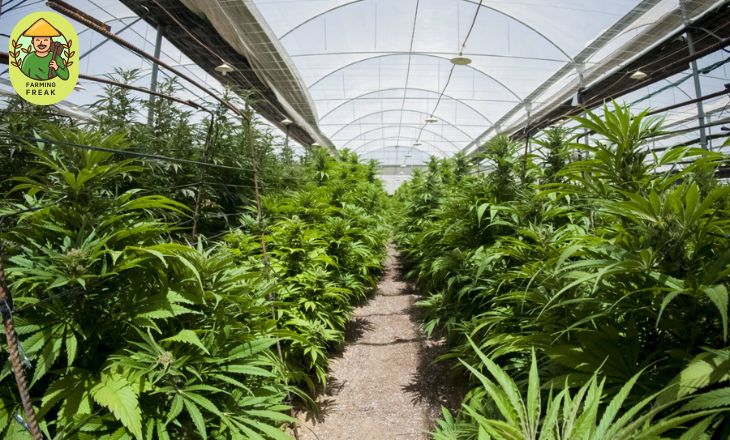In the rolling hills of California, a quiet revolution is taking place among cannabis farmers. The increasing popularity of marijuana is leading to a greater understanding of its ecological footprint.
In this farming sustainability and eco-conscious practices are guiding principles for those cultivating this controversial plant. Solar-powered grow lights to organic fertilizers and cannabis farmers are pioneering innovative ways to reduce their carbon footprint. It cultivates a more sustainable future.
In the era of green weed farming let’s explore how cannabis farmers are leading the charge in creating a greener future for agriculture and challenging stereotypes along the way.
Weed Farming
It’s also known as cannabis cultivation, which has gained significant attention in recent years. It is increasing legalization of marijuana for medical and recreational use. New opportunities and challenges arise for farmers as more states and countries embrace the industry. They are looking to enter this lucrative market.
Cultivating cannabis requires a deep understanding of plant biology, horticulture techniques, and compliance with regulations that vary greatly from one location to another. An interesting aspect of weed farming is the diversity of strains available, each with its unique characteristics.
History Of Cannabis Production
The history of cannabis production dates back thousands of years, with evidence of its cultivation found in ancient civilizations such as China, India, and Egypt.
In China, cannabis was used for medicinal purposes as early as 4000 BC; the use of hemp fibers for ropes and textiles can be traced back to ancient Mesopotamia.

During the colonial era, Europeans brought cannabis to the Americas, where it became an important crop for industries such as paper, textiles, and rope-making. In the early 20th century, cannabis production faced increasing regulations and restrictions due to concerns about its psychoactive effects.
This led to the criminalization of marijuana in many countries around the world. Cannabis production has experienced a resurgence in recent years, with growing acceptance of its medical and recreational uses.
Environmental Impact Of Cannabis Production
The environmental impact of cannabis production is a complex issue that draws attention to both the benefits and challenges of cultivating this plant. In places like Nevada City, where cannabis production is widespread, the use of greenhouses has become a common practice.
Greenhouses offer controlled environments for optimal growth, but they also consume significant amounts of energy for lighting, heating, and cooling.

An important aspect of cannabis production’s environmental impact is the construction of stone roads within cultivation sites. These stone roads can disrupt natural habitats and contribute to soil erosion if they are not properly managed.
Water usage in cannabis cultivation is another crucial element to consider, as it requires substantial amounts of water throughout the plant’s life cycle.
Turning Grass Blue
Cultivating cannabis demands a significant amount of water, whether it’s grown indoors or outdoors. Each plant typically needs around five to six gallons of water daily, which is nearly double the water consumption of other common crops. In California, irrigated agriculture currently utilizes 70 to 80 percent of the total water supply.
Sustainable Water Usage And Energy Consumption
Stone Road’s pioneering method of water conservation, involves utilizing wells connected to an underground aquifer. It demonstrates their dedication to sustainability and stands in stark contrast to the widespread issue of water theft in unlicensed cannabis cultivation.
- Environmental Benefits Of Water-Conscious Techniques
Implementing water-saving techniques not only helps to avoid excessive watering but also lowers runoff, thereby decreasing the negative effects of insecticides and other chemicals on aquatic environments. Veritas and Stone Road both emphasize sustainable pest control methods to protect water quality and ecosystem well-being.
Farmers can control the growth of cannabis indoors by manipulating lighting and climate conditions, resulting in frequent harvests throughout the year.
This fast-paced production also leads to significant greenhouse gas emissions from using petrochemical-powered lighting, heating, cooling, and dehumidification systems.
Indoor grow houses have enabled farmers to govern cannabis lifecycles efficiently, but their rapid turnaround leads to significant greenhouse gas emissions.
- The Role Of LED Lighting In Reducing Energy Consumption
LED lighting provides a greener and more efficient option compared to traditional high-intensity discharge lamps, leading to lower energy consumption and emissions in the cultivation of cannabis.
The Koala Green Development project in California showcases the superior cost-efficiency and energy-saving benefits of LED lighting over conventional lighting systems.

Stone Road is incorporating solar panels on its premises to support additional LED lighting, which helps to lessen the need for HVAC systems and ultimately reduces energy usage even more.
LED lighting not only lowers energy usage but also boosts yields, potentially shrinking the environmental impact of the cannabis sector in the long run.
Economic Considerations Of Cannabis Production
Cannabis farmers can establish themselves as top-tier brands in a fierce market by focusing on quality rather than cost reductions. Adopting eco-friendly methods not only helps the environment but also resonates with changing consumer preferences for sustainable products.
The decision between plastic and glass packaging in the cannabis sector involves more than just immediate expenses; it can have a substantial influence on future profits and brand image. Plastic waste from marijuana packaging, such as ziplock bags, sturdy tubes, used vape cartridges, and other items, adds to the worldwide plastic crisis.
It is uncertain how significant the impact of cannabis packaging is on this already extensive issue. The environmental impact of plastic waste cannot be ignored, with many consumers showing a preference for sustainable packaging solutions. Investing in glass packaging can result in cost savings over time by reducing spoilage rates and improving product shelf life.
The oceans are overwhelmed with a staggering 363 billion pounds of plastic that eventually enters the human food supply. Single-use plastics can take centuries to break down, emitting harmful methane and ethylene gasses during decomposition.
Future Challenges OF Cannabis Farmers
The key challenge facing cannabis farmers in the future is the increased competition in the market. There will be a flood of new growers entering the industry as more states and countries legalize cannabis, leading to oversaturation and driving down prices.
This will put pressure on existing farmers to differentiate their products and find unique selling points to remain competitive.
The challenge that cannabis farmers will face in the future is regulatory uncertainty. The laws and regulations surrounding cannabis cultivation are constantly evolving, creating a complex and unpredictable environment for growers.
Conclusion
The shift towards sustainable and eco-friendly practices in the weed farming industry is a promising trend that not only benefits the environment but also improves the quality of the final product. Cannabis farmers are leading the way in sustainable agriculture by adopting cutting-edge methods like organic farming, efficient water usage, and renewable energy sources, inspiring other sectors to follow suit.
Due to increasing consumer demand for ethically produced cannabis, it is clear that going green is not just a trend but a necessary step towards a more sustainable future. All stakeholders in the industry must prioritize environmental responsibility and work together towards a greener and cleaner future for cannabis farming.
FAQ’s
What Is Future Number 1 Cannabis?
Strains that are gaining popularity and could potentially be contenders for the top spot include Wedding Cake, Gelato, and Blue Dream. These strains are known for their unique flavors, potent effects, and high THC content, making them favorites among both recreational and medical users.
What Is Sustainability In Cannabis?
Sustainability in cannabis refers to the practices and initiatives aimed at reducing the environmental impact of cultivating, processing, and distributing cannabis products. This includes using renewable energy sources, implementing water conservation techniques, and minimizing waste generation throughout the supply chain.
What Is The Outlook for Cannabis In 2024?
The outlook for cannabis in 2024 appears to be promising and optimistic. With an increasing number of states legalizing both medical and recreational marijuana, the industry is poised for continued growth and expansion. This trend is likely to attract more investors, leading to further innovation and development within the cannabis market.
- Chicken Pecking Order: Top Secrets Of Chicken Flocks (2024) - May 26, 2024
- Top 5 Differences Between Rabbits and Hares - May 25, 2024
- 9 Edible Weeds Likely Growing in Your Yard (2024) - May 23, 2024

